A-10 Warthog Drawing
How to draw perspective
Learning how to draw perspective correctly could change your entire drawing process. Whether drawing traditionally with pencil and paper, or digitally using a graphics tablet, I still construct even the most complicated scenes entirely using the draughting techniques of the horizon line and vanishing points that most people will have learnt in art class.
This might seem strangely over-complicated, when it's so easy to quickly mock up a basic version of the scene using 3D modelling programs to guide your drawing, but when you set out a perspective drawing by hand, you give yourself some flexibility in interpreting the method. In following and often slightly bending these rules, you enrich the narrative composition of the image by adding depth, drama and atmosphere. Here are some of the methods that I use most frequently, including one-point perspective and two-point perspective.
Also read our guide to the art techniques you need to know, and our roundup of the best how to draw tutorials.
Click on the top right-hand corner of each image to enlarge it.
01. Place the horizon line
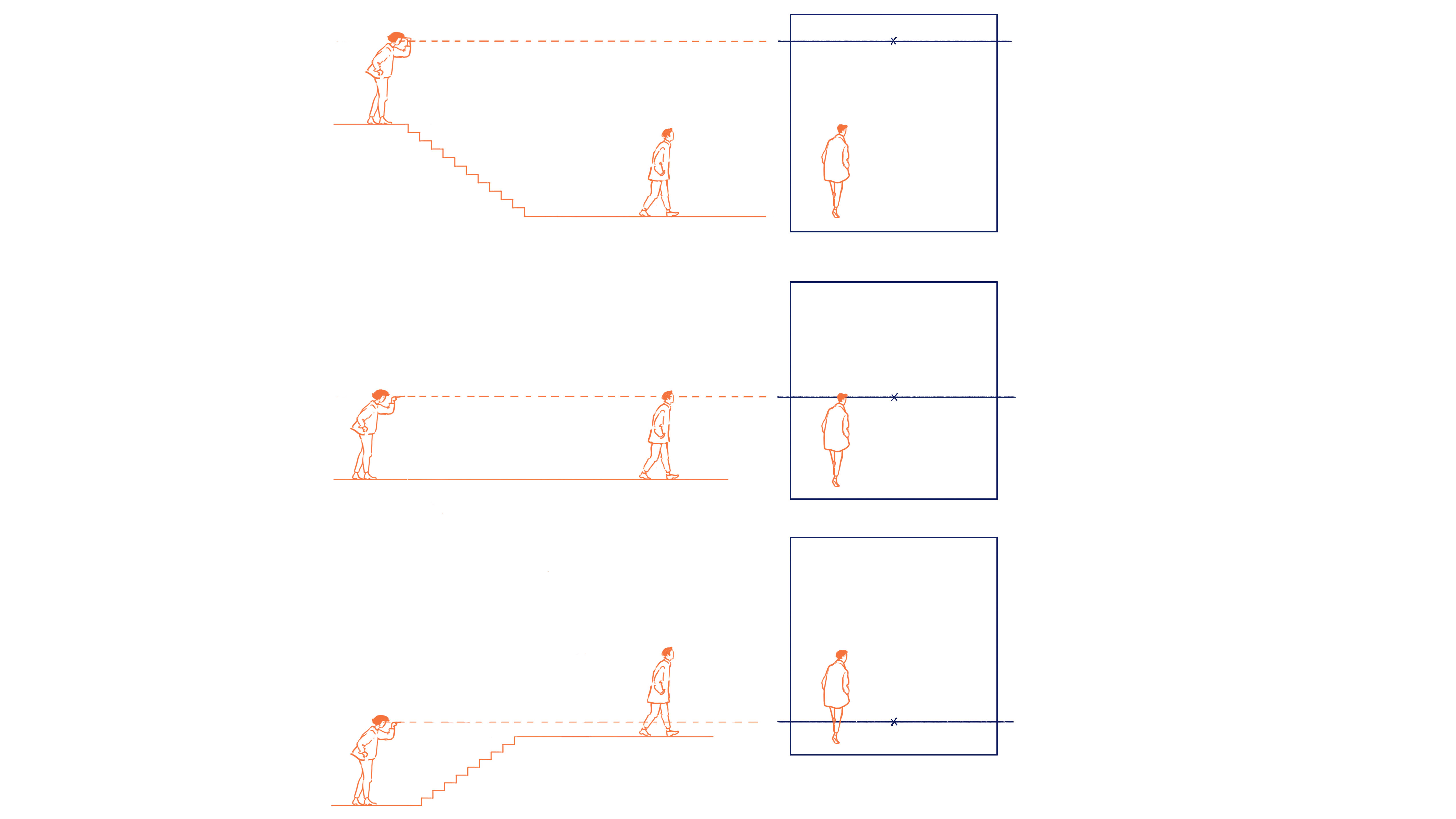
(Image: © Anna Mill)
The most important decision is the placement of the horizon line in relation to the important characters and elements such as objects, furniture or buildings in the scene. It's useful to remember that the horizon is on the same level as the imagined eye of the viewer.
When you place the horizon line above the characters, it gives the viewer the impression that they're in a position higher up, looking down from a platform, say. If we imagine that our viewer is standing on the same surface as the other characters in the scene, then all standing figures in the scene will also have their head on the horizon line, with the exception of particularly tall or short characters.
If the horizon line is low, and the characters stretch high above the horizon, then it appears as if the viewer is lying down on the same surface, or standing on a lower platform looking up. In my graphic novel Square Eyes I would often set the horizon line either very low or very high in the drawing. It seemed to fit with the tone of the book, in which the main character is often confused and disoriented by surroundings that either loom above her or stretch away in inhumanly vast vistas.
02. Utilise one-point perspective
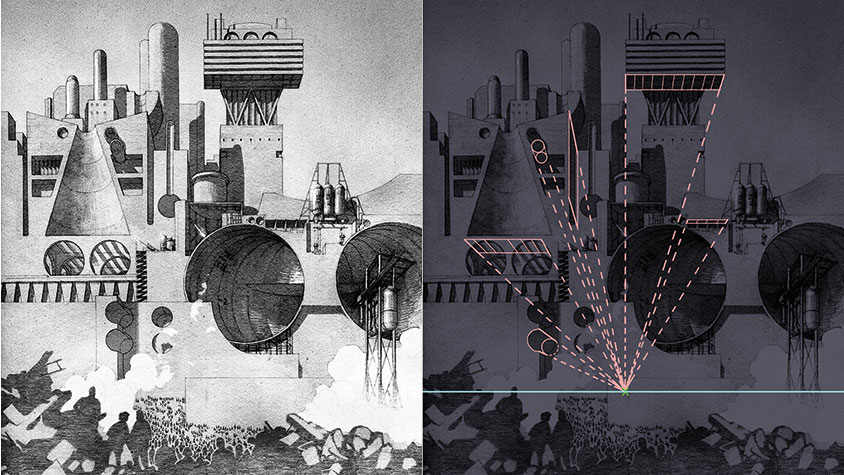
(Image: © Anna Mill)
The above image shows one-point perspective with the horizon line placed low in the frame, but level with the figures to show them being dwarfed by the buildings.
In one-point perspective, horizontal lines on any plane perpendicular to the point of view will recede to a vanishing point that's located somewhere on the horizon line. Usually, I avoid putting the vanishing point right in the middle of the space that I'm drawing, because it tends to create too much symmetry in the view, making the composition feel static and a little unnatural. Yet sometimes this eerie calm can add to the atmosphere of the scene.
03. Create two-point perspective
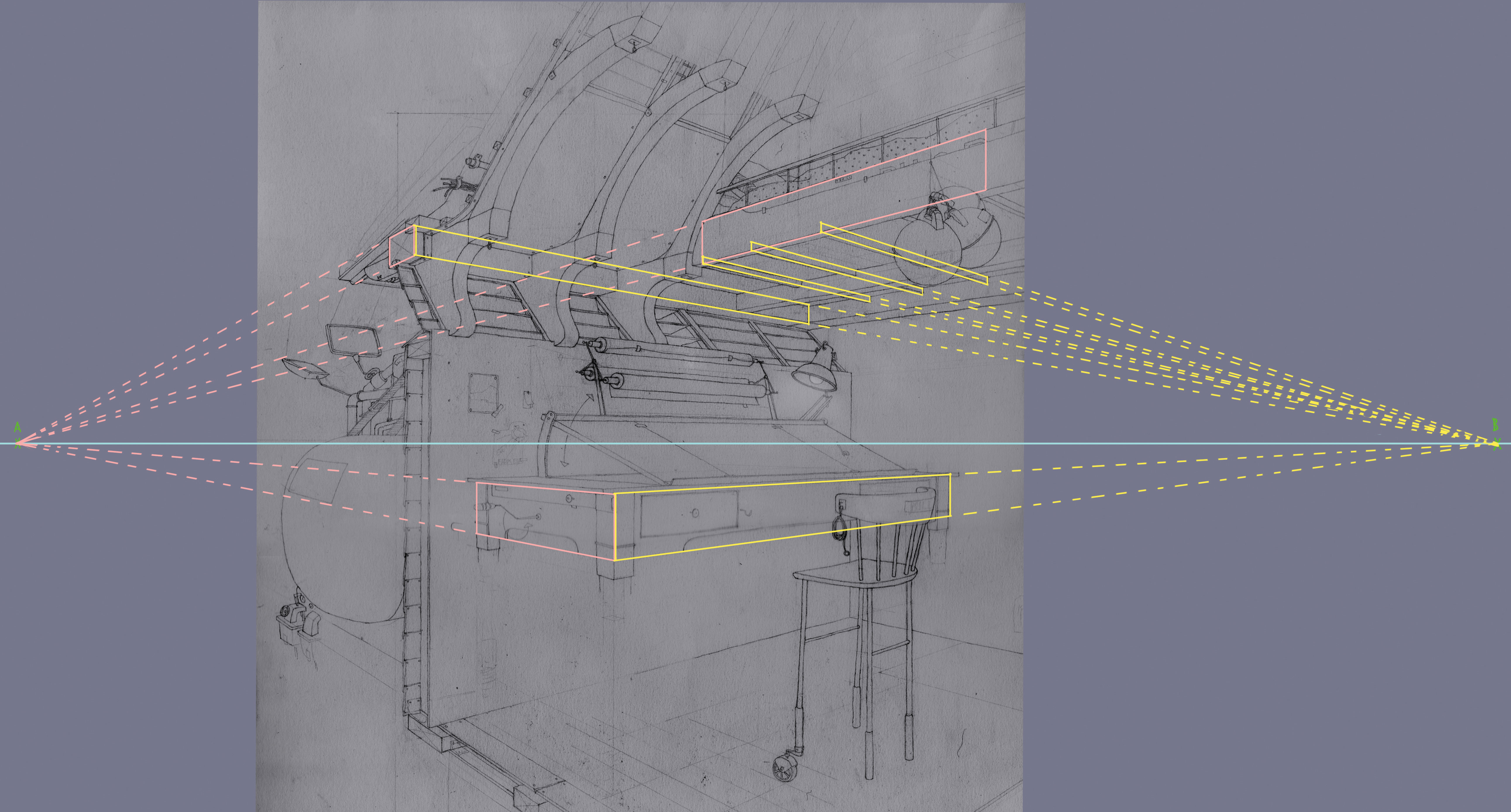
(Image: © Anna Mill)
With this example of two-point perspective, both vanishing points are out of frame and the horizon line is centred on the image, giving a natural, low-tension feeling to the scene.
When drawing two-point perspective, I always place either one or both of my vanishing points outside the edges of the drawing. I find that when both the left and right vanishing points are inside the frame, dramatic perspective angles are created. This sometimes generates objects that look strangely stretched. For the most part however, I want a more natural field of view, so I take care to locate the vanishing points in such a way that they create a good balance between drama and realism.
04. Up your skill using analogue tools
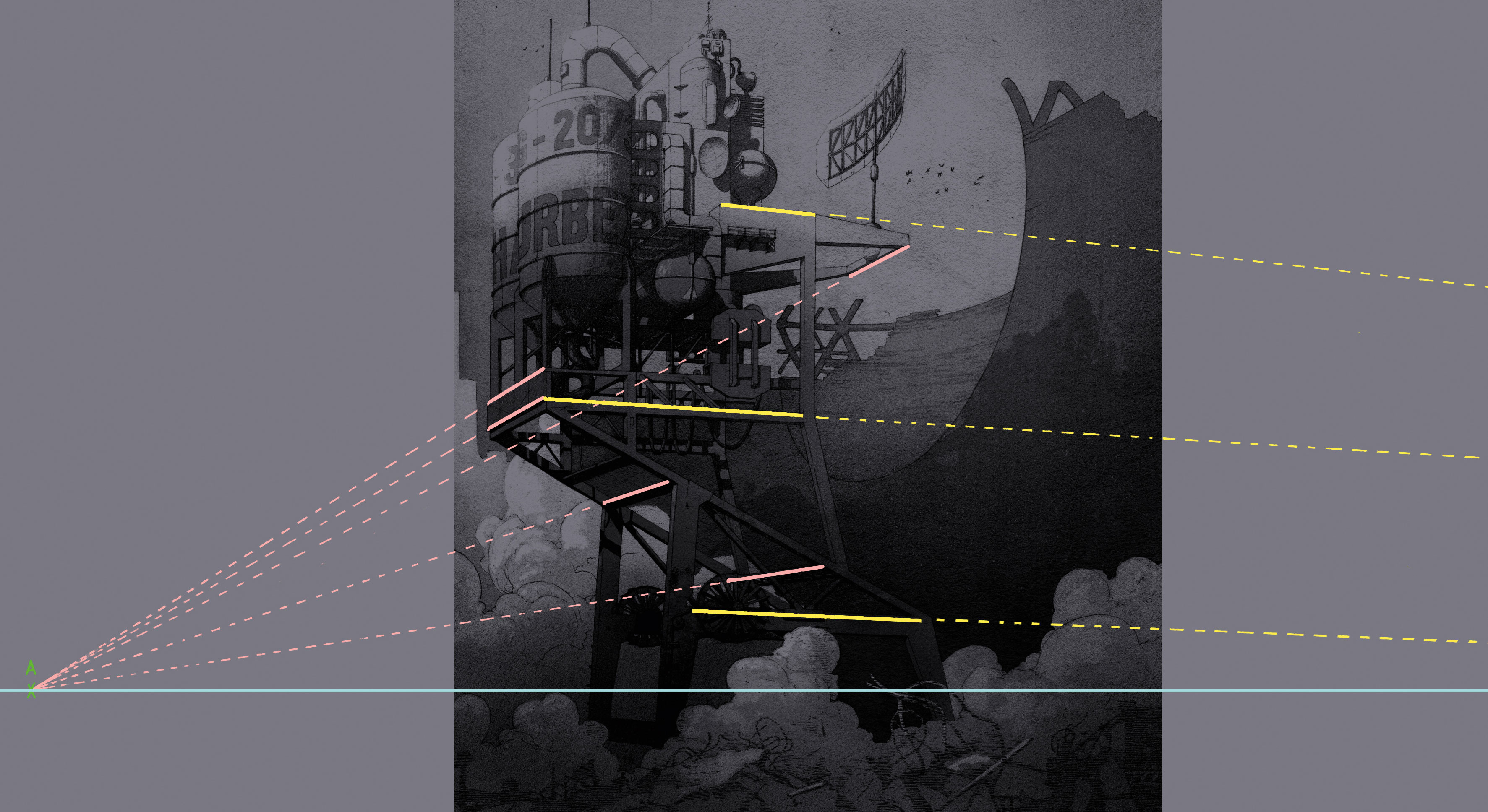
(Image: © Anna Mill)
I have various sets of rulers of my own making that I use when carrying out traditional paper and pencil perspective drawing. The simplest ones are cut from mount board and pivot on a drawing pin that acts as the vanishing point. This enables me to quickly move the ruler around the page, and know that any line that I draw against the draughting edge will recede to that vanishing point. This can be set up with as many rulers and vanishing points as is required, but typically I only use one or two at once.
The image above shows two-point perspective with a low horizon line and vanishing point far right out of the frame to enhance the feeling of distance and scale. It's not always possible to have a ruler long enough or table wide enough to allow your ruler to be physically connected to the vanishing point. What's needed is a ruler that will reliably pivot about a point to which it's not actually connected. This was an enjoyably tricky problem that I grappled with for many years, before finally coming up with a solution that involved fixing three rulers together, which moved around two drawing pins.
05. Dive into digital tools
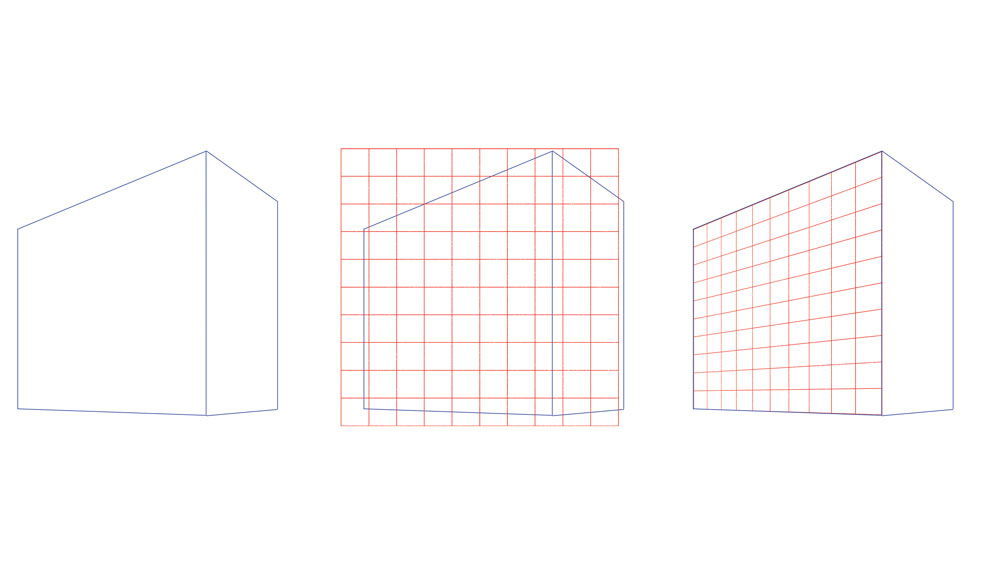
(Image: © Anna Mill)
When drawing digitally in Photoshop, I find that it's usually too cumbersome to expand the canvas to draw all the perspective lines receding to a vanishing point to the far left or right outside the scene. In this case I tend to add a basic square grid for guidance, which I adjust to the main perspective lines using the program's Skew tool (Edit > Free Transform > Skew). This usually provides enough guidance that more detailed lines can be drawn by eye, even if they don't fall exactly on a gridline.
Drawing digitally also allows for some other timesaving shortcuts, particularly when drawing repeating elements in perspective, such as a building that has many windows of the same size and shape. Here's my method for depicting repeating elements. First, draw one window and save the file, calling it 'Single Window'. Next, create a new document, go to File > Place Linked... and choose your Single Window file. Add as many multiples of the window as you need, arranging them to suit the facade of the building that you are drawing. Then save the file as 'Facade 1'.
Now create a new document, and Place Linked file Facade 1. You can now skew the facade to the perspective that you need, without having to draw all the windows individually. In addition, if you make a change to your Single Window file, then all the copies will also update in the perspective view. Finally, link the facade file and skew to suit the perspective in the scene.
05. Embrace your errors
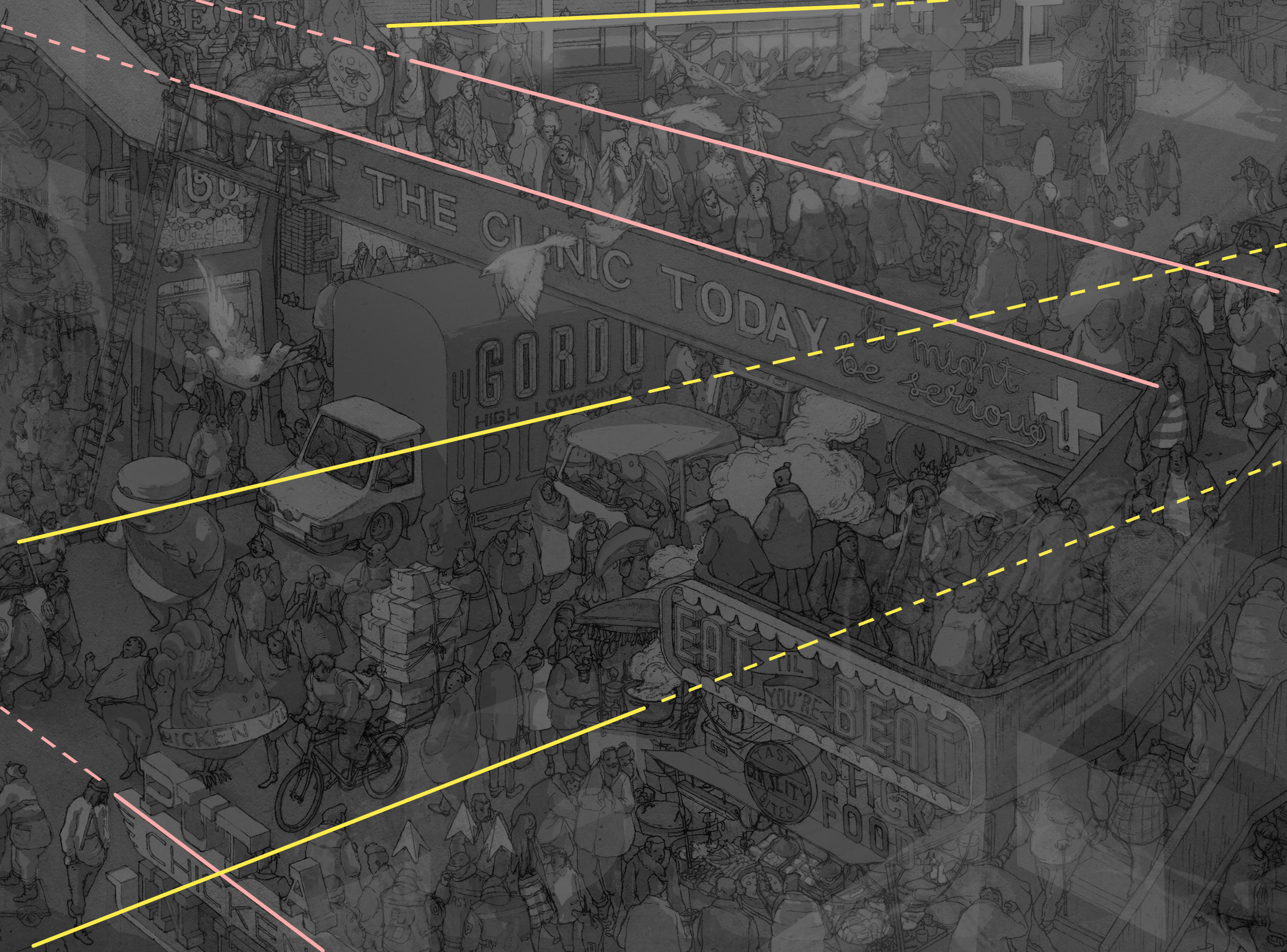
(Image: © Anna Mill)
It's only when some extraordinarily complex shape is required that I ever use 3D modelling software to help generate the image. This is partly from a stubborn delight in a technical drawing challenge, but also because apart from the flexibility it gives you, it also allows for some mistakes. I feel it's in these small errors we make when we craft something by hand that some of our personality shows through in the work.
I feel like my inaccuracies are probably specific to me, and that I make the same small mistakes in similar ways over and over again when drawing. The nearer that a draughtsman gets to robotic perfection, the less present are the signs of a human hand and mind creating those small inaccuracies that are unique to that artist, and I believe that, even if it takes a little longer, this is something that is worth preserving.
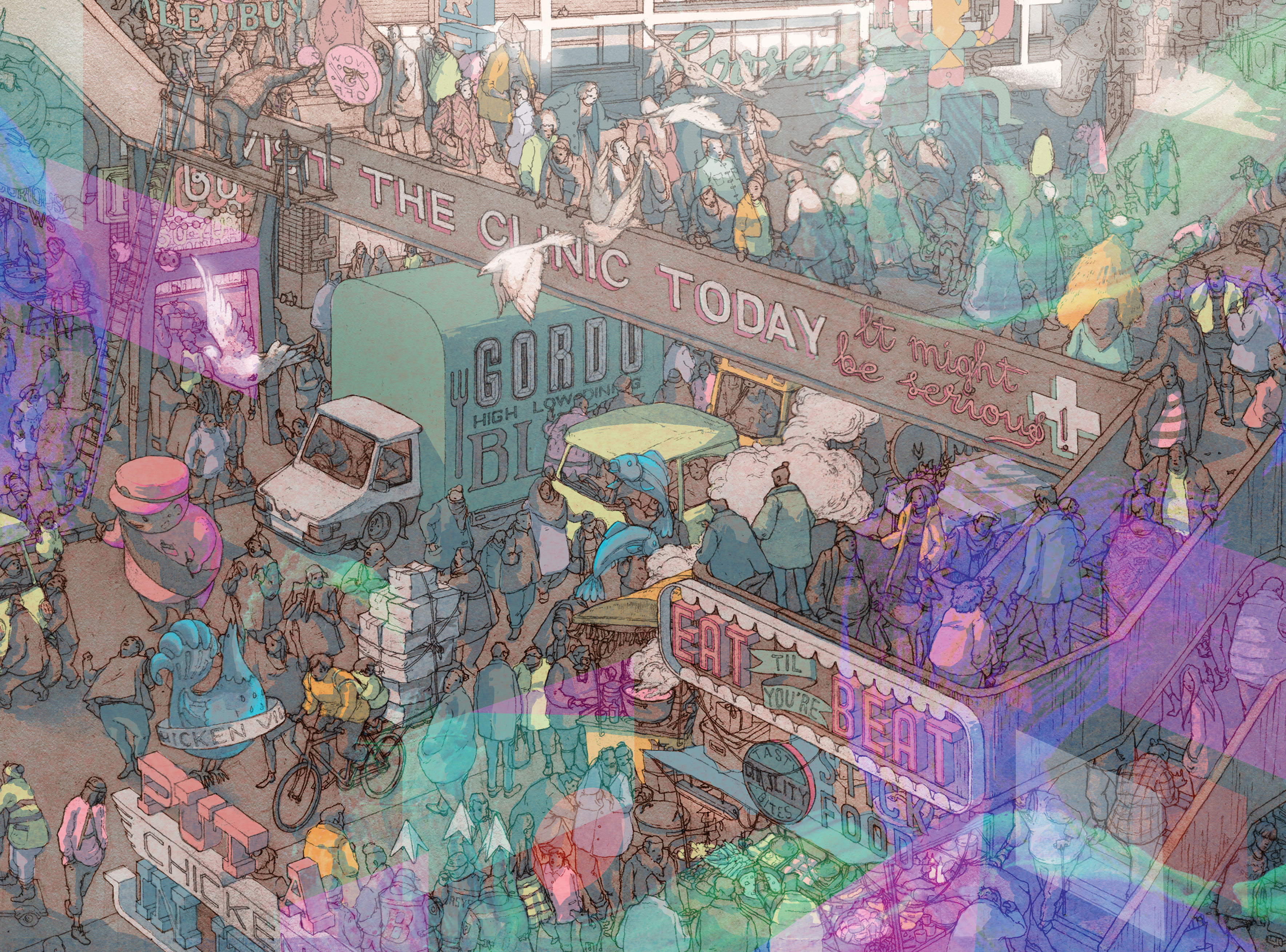
This article was originally published in issue 301 of Computer Arts magazine. Buy issue 301 .
Read more:
- The essential guide to foreshortening in art
- Google's art app turns you into a masterpiece
- The best pencils for colouring, drawing and sketching
Anna is a winner in 2019's World Illustration Awards. Her first graphic novel Square Eyes, with co-writer Luke Jones, explores a near-future city where digital visions are drawn over the crumbling physical world, and dreams, memory and realities blur.
Related articles
A-10 Warthog Drawing
Source: https://www.creativebloq.com/how-to/draw-perspective
Posted by: sosapriece.blogspot.com

0 Response to "A-10 Warthog Drawing"
Post a Comment